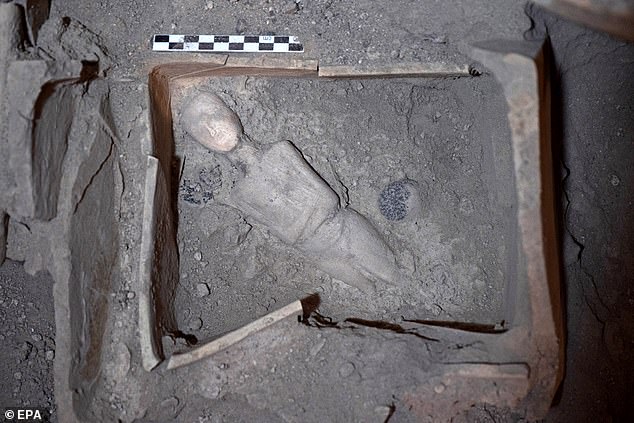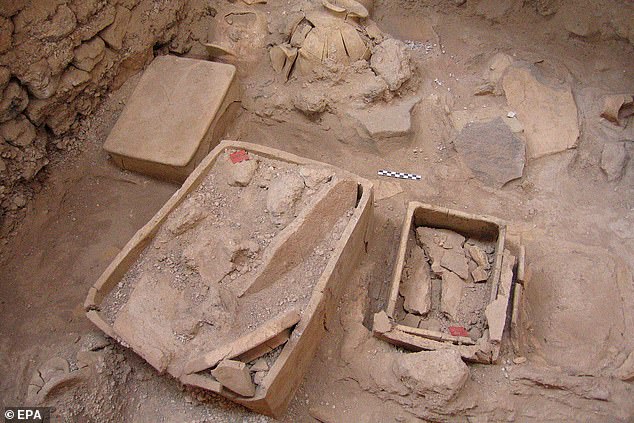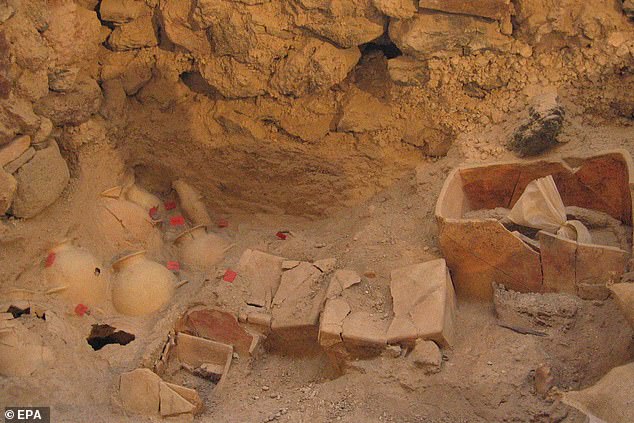3,600-Year-old figurine found in a Prehistoric Village in Greece
A 3,600-year-old marble figurine of a woman is among a treasure trove of artefacts found in a prehistoric village on the Greek island of Santorini.

Archaeologists also found two small marble jars, a marble vial and an alabaster vase inside rectangular clay chests within an ancient settlement.
They said the finds shed new light on the beliefs of the Theran society – a mysterious group that scientists know little about as they had no written language.
The discovery was made by experts at the Greek culture ministry in the prehistoric village of Akrotiri – known locally as the ‘Minoan Pompeii’.
The large settlement was destroyed around the year 1628 BC in a catastrophic volcanic eruption on the island, which in Ancient Greek was known as Thera.
Thick layers of ash from the explosion preserved the remains of many frescoes, objects and artworks in Akrotiri. The new finds include a number of different marble artefacts that were likely used for religious or other symbolic rituals, archaeologists said.
They shed fresh light on the prehistoric Theran society, which scientists believe was killed off during Santorini’s 16th Century BC eruption.
‘These finds are undoubtedly linked to the views and beliefs of Theran society,’ the Greek culture ministry said.

‘They provide a stimulus for a new interpretive drive on fundamental questions about the ideology and possibly the religion of prehistoric Aegean society.’
Just like the Roman-era remains in Pompeii and Herculaneum, Akrotiri is a goldmine for researchers. This is because much of the settlement became preserved for the ages by solidified volcanic ash.

The Late Bronze Age eruption devastated many nearby islands and is commonly believed to have triggered the downfall of the once-dominant Minoan civilisation.
It is thought the group, based on the neighbouring island of Crete, fell due to the desolating earthquakes and tsunamis that followed.
Akrotiri has been suggested by several experts as a likely candidate to represent the fictional island of Atlantis mentioned in Plato’s works.





